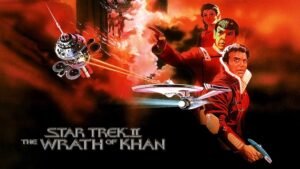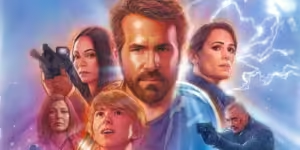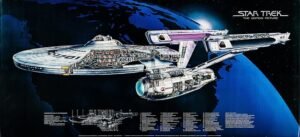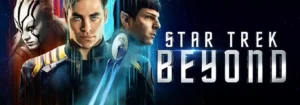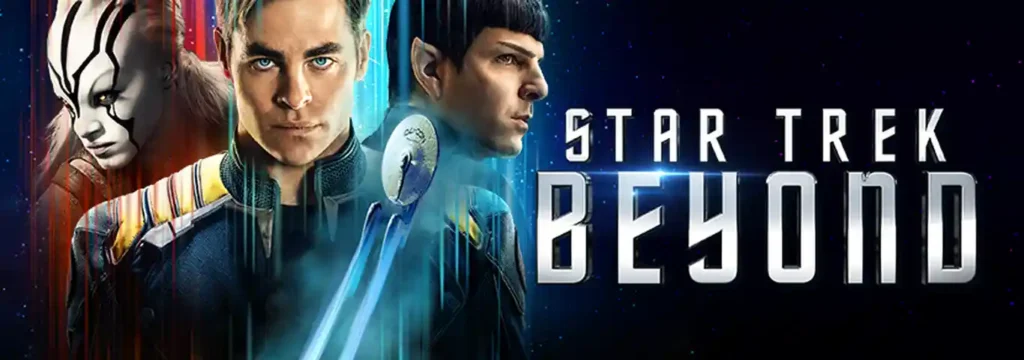
Introduction to Star Trek Beyond
Star Trek Beyond is the third installment in the rebooted Star Trek film series, a renowned franchise that has captivated audiences since its inception in the 1960s. Directed by Justin Lin, who is known for his work on the Fast & Furious franchise, this film was released on July 22, 2016. Star Trek Beyond continues the adventures of the USS Enterprise crew as they journey through space, encountering challenges and exploring new worlds.
The film brings back a talented ensemble cast, featuring Chris Pine as Captain James T. Kirk, Zachary Quinto as Spock, and Zoë Saldana as Nyota Uhura. Additional notable cast members include Karl Urban, who plays Dr. Leonard McCoy, and John Cho, portraying Hikaru Sulu. New characters are introduced as well, including Jaylah, played by Sofia Boutella, adding fresh dynamics to the established team. This mix of returning and new cast members contributes to the film’s depth and appeal, enhancing its narrative by presenting varied perspectives within the familiar framework.
Upon its release, Star Trek Beyond generated considerable excitement among fans and critics alike, as it marked a reaffirmation of the franchise’s core values of exploration, diversity, and teamwork. The film’s emphasis on camaraderie and resilience in the face of adversity resonates strongly with its predecessors while carving out its unique identity within the Star Trek universe. Additionally, the ethereal score composed by Michael Giacchino elevates the film’s emotional stakes, complementing its thrilling action sequences. Star Trek Beyond aims not only to entertain viewers with its spectacular visual effects and action but also to highlight the enduring spirit of the series.
Plot Overview
In “Star Trek Beyond,” the narrative unfolds with the USS Enterprise and its crew as they embark on a mission exploring uncharted territories in deep space. Captain James T. Kirk, portrayed by Chris Pine, is at the helm, eager to navigate the expansive universe while confronting the challenges that come with their adventurous spirit. The plot swiftly escalates as the crew encounters a formidable adversary — a mysterious entity named Krall, played by Idris Elba, who poses a significant threat to both the Federation and their mission. His motives are shrouded in secrecy, adding layers of tension and intrigue to the storyline.
As the Enterprise ventures deeper into the unknown, they find themselves ambushed by Krall and his technologically advanced forces. This unexpected confrontation results in a catastrophic attack on the ship, forcing the crew to evacuate and find ways to survive on the hostile planet below. Once separated, members of the crew must rely on their unique skills and strengths, highlighting their individual character arcs. Notably, Spock, portrayed by Zachary Quinto, grapples with personal dilemmas regarding his future, while perhaps finding camaraderie in a newfound relationship with Dr. Leonard McCoy, played by Karl Urban. These developments contribute to a deeper understanding of the characters, showcasing their evolution amidst adversity.
The story seamlessly weaves action, emotion, and humor as the crew collaborates to unite against Krall’s menacing plans. Amidst the chaos, themes of friendship, sacrifice, and perseverance are intricately explored, giving audiences a comprehensive experience of their journey. Throughout the film, the essence of exploration remains central, embodying the spirit of Star Trek and its core message: the pursuit of knowledge and understanding in the vast universe. As the crew works towards overcoming the dire circumstances they face, viewers are treated to a narrative rich with adventure and profound character interactions.
Characters and Performances
In “Star Trek Beyond,” the characters play a pivotal role in conveying the emotional resonance and thematic depth of the film. Central to this exploration are the performances by the main cast, including Chris Pine as Captain James T. Kirk, Zachary Quinto as Spock, and Zoe Saldana as Lieutenant Nyota Uhura. Each actor brings a unique interpretation to their roles, contributing to the film’s overall narrative and character dynamics.
Chris Pine’s portrayal of Captain Kirk demonstrates a compelling blend of charisma and vulnerability. Throughout the film, he navigates the complexities of leadership while grappling with the personal toll that his responsibilities take on him. Pine effectively captures Kirk’s evolution, particularly in moments that require him to confront existential questions about his role and the challenges faced by the crew. This depth enhances the audience’s connection to the character, grounding the film in relatable human experiences.
Zachary Quinto’s performance as Spock showcases a nuanced depiction of the character’s internal struggle between duty and emotion. Quinto successfully balances Spock’s trademark logic with moments of heartfelt anguish, particularly in his interactions with Kirk. The chemistry between Pine and Quinto is palpable, creating a dynamic partnership that serves as the film’s emotional core. This camaraderie is instrumental in illustrating the essence of friendship and loyalty, hallmarks of the Star Trek franchise.
Furthermore, Zoe Saldana’s representation of Uhura shines through her portrayal of a strong and resourceful officer, who grapples with her feelings while maintaining her professional integrity. Saldana’s performance encapsulates not only the strength of her character but also adds a layer of complexity to the interpersonal relationships aboard the starship. Together, the performances of Pine, Quinto, and Saldana resonate strongly, elevating “Star Trek Beyond” beyond a mere sci-fi adventure and into a profound exploration of character and connection.
Themes and Messages
Star Trek Beyond offers viewers a poignant exploration of themes that resonate deeply within both the Star Trek franchise and contemporary societal values. At its core, the film accentuates the importance of friendship and teamwork, illustrating how bonds formed through shared experiences are vital in overcoming obstacles. The camaraderie among the crew members of the USS Enterprise showcases loyalty and unity, emphasizing that collective strength is often more effective than individual prowess when facing challenges.
Another significant theme in Star Trek Beyond is resilience in the face of adversity. The narrative presents a variety of challenges that test the characters, forcing them to adapt and grow. This portrayal resonates with modern audiences who often confront numerous adversities in their lives, highlighting the necessity of perseverance. The crew’s ability to thrive under pressure reinforces the idea that determination and grit can lead to success, even in the most daunting situations.
Furthermore, the exploration of identity serves as a profound message within the film. Each character grapples with their own sense of self and purpose, particularly as they encounter adversaries that challenge not only their strength but also their beliefs and values. This theme reflects an important aspect of the human experience, where individuals often seek to define themselves in relation to others and their environment. The struggles faced by the crew members evoke a sense of relatability, encouraging audiences to reflect on their own identities.
Ultimately, Star Trek Beyond weaves these themes together, creating a narrative tapestry that highlights friendship, resilience, and identity. Each element contributes to the film’s richness and depth, enhancing its relevance for today’s viewers. By encapsulating these enduring messages, the film not only pays homage to the long-standing tradition of the Star Trek series but also speaks to universal truths that continue to inspire and resonate with audiences around the world.
Visuals and Special Effects
In “Star Trek Beyond,” the visual elements and special effects play a crucial role in immersing the audience in the expansive universe. The cinematography is expertly crafted, leading to breathtaking visuals that elevate the film’s storytelling. Each scene is meticulously designed to reflect the vastness of space and the intricate details of futuristic technology. The cinematographer’s use of vibrant colors, dynamic lighting, and innovative camera angles establishes a visually engaging atmosphere that captivates viewers.
Action sequences throughout the film are particularly notable for their seamless integration of special effects. The team behind “Star Trek Beyond” utilized cutting-edge technology and techniques to create thrilling scenes that maintain a sense of realism despite their fantastical nature. For instance, the battle sequences are intensified by expert CGI, which conveys the magnitude of space battles while ensuring that the characters remain relatable and grounded. This balance between real and digital worlds enhances the cinematic experience, leaving audiences on the edge of their seats.
Furthermore, the overall aesthetic of “Star Trek Beyond” is a testament to the filmmakers’ commitment to visual storytelling. They successfully blend practical effects with digital enhancements, creating a rich tapestry of sights and sounds that resonate throughout the film. The various alien landscapes and spacecraft designs contribute to its unique visual identity, making it stand out in the franchise. This meticulous attention to detail ensures that audiences are engaged not only by the characters and plot but also by the stunning visual presentation.
Ultimately, the visuals and special effects in “Star Trek Beyond” significantly enhance the film’s narrative. By embracing advanced technology and artistic ingenuity, the production team delivers a truly memorable cinematic experience, showcasing the limitless possibilities of the universe that “Star Trek” represents.
Music and Soundtrack
The auditory experience in “Star Trek Beyond” is notably enriched by the musical prowess of composer Michael Giacchino. His score not only echoes the franchise’s history but also elevates pivotal moments within the film, weaving a sonic tapestry that resonates with both newcomers and devoted fans. Giacchino’s ability to lend depth to the film’s narrative is evident in how the music amplifies emotional scenes, creating a more immersive experience.
One of the standout elements of the soundtrack is its capacity to reflect the themes of exploration and camaraderie. For instance, during key scenes where the crew faces adversity, the score intensifies, reinforcing the urgency and emotional weight of their journey. The blend of orchestral and modern elements in Giacchino’s compositions serves to evoke nostalgia while also appealing to contemporary audiences. By incorporating thematic motifs associated with beloved characters, Giacchino effectively reinforces audience attachment to the crew, making their struggles and triumphs even more poignant.
The use of leitmotifs throughout the film is particularly noteworthy. As classic themes from previous films are skillfully interwoven with innovative new pieces, Giacchino pays homage to the legacy of “Star Trek” while also exploring new musical horizons. This balance between familiarity and innovation plays a critical role in establishing a connection with viewers, enhancing their emotional engagement with the story.
Moreover, the soundtrack features several original songs that complement the film’s tone. These pieces not only provide contrast but also serve to underscore the film’s pivotal moments, creating an atmosphere that resonates with viewers long after the credits roll. In this regard, Giacchino’s contributions to “Star Trek Beyond” affirm his place as a leading composer in modern cinema, successfully marrying sound and narrative to create a memorable cinematic experience.
Trailer Breakdown
The cinematic experience of “Star Trek Beyond” is magnificently encapsulated in its official trailer, which has captivated audiences with thrilling visuals and gripping narrative elements. With its dynamic action sequences and a strong focus on interpersonal relationships, the trailer acts as a gateway into the film’s broader themes. At its core, “Star Trek Beyond” promises to explore the concept of exploration, both in space and within oneself, elements that have always resonated with the franchise’s legacy.
Viewers are treated to a quick montage showcasing the crew of the USS Enterprise as they face unforeseen challenges in a distant galaxy. The trailer opens with a breathtaking view of space, filled with vibrant colors and stars, setting an awe-inspiring tone that is characteristic of the Star Trek universe. Key scenes highlight the crew’s bond, their camaraderie, and the challenges they must overcome together, reminding us that teamwork is essential when navigating the unknown.
Notably, the trailer features a gripping moment where Captain James T. Kirk, played by Chris Pine, delivers a powerful speech that underscores the film’s underlying message of resilience and unity. Additionally, the introduction of new characters and adversaries, particularly the formidable Krall, adds layers of intrigue and suspense that promise to keep the audience engaged. The stunning visual effects and fast-paced editing further enhance the excitement, making it clear that “Star Trek Beyond” aims to maintain the franchise’s reputation for high-quality science fiction entertainment.
As you watch the trailer below, immerse yourself in the world of “Star Trek Beyond” and take note of the standout moments that encapsulate the adventure awaiting viewers. This film is sure to appeal to both longstanding fans and newcomers, inviting them to join in an exciting cosmic journey.
Epic Spoilers and Discussion
“Star Trek Beyond” captivates viewers with its dynamic storytelling, but the film is peppered with significant plot twists that elevate its dramatic tension. One of the pivotal moments occurs when the crew of the USS Enterprise finds themselves trapped on an unfamiliar planet after the destruction of their ship at the hands of Krall, a villain motivated by vengeance and nostalgia. This unexpected turn significantly alters the trajectory of the narrative, forcing the crew to confront not only external threats but also their own vulnerabilities.
Another crucial moment comes when it is revealed that Krall has been collecting artifacts from previous battles, showcasing how personal history intertwines with the broader conflict. This revelation brings depth to his character, illustrating that his motivations stem from a complex mixture of loss and a desire for power. Observing this character arc encourages audiences to reflect on the nature of villainy and the human condition; Krall becomes more than just an antagonist, he embodies the lingering effects of war and trauma.
As the narrative unfolds, the climactic scenes resonate on multiple levels. The ultimate confrontation not only highlights the strengths and weaknesses of the main characters, especially Captain Kirk and Spock, but also emphasizes the importance of friendship and unity. During their setup against adversity, viewers witness Kirk’s growth as a leader, learning to rely on his crew’s strengths rather than attempting to shoulder the burden alone. This evolution enhances the film’s commentary on teamwork and resilience within the context of the expansive universe of Star Trek.
The blend of thrilling action sequences and emotional depth throughout “Star Trek Beyond” invites audiences to reevaluate their understanding of sacrifice and evolution, providing a rich foundation for discussion following the film’s compelling revelations.
Audience Reception and Box Office Success
Upon its release in 2016, Star Trek Beyond garnered a generally positive reception from both audiences and critics. The film was praised for its energetic action sequences and character development, which resonated with long-time fans of the franchise as well as new viewers. Critics noted that the film successfully balanced the nostalgia of the original series with a fresh narrative, capturing the essence of exploration that is central to the Star Trek ethos. The direction of Justin Lin received particular acclaim, with many observers highlighting his ability to infuse the film with a lively pace and visually stunning effects.
From a box office perspective, Star Trek Beyond was a moderate success, grossing approximately $343 million worldwide against a production budget estimated at $185 million. While it performed well initially, it did not reach the financial heights of its predecessors, Star Trek (2009) and Star Trek Into Darkness (2013). Various factors contributed to this performance, including a competitive summer release schedule and mixed audience awareness. The film’s marketing efforts aimed to rekindle interest in the franchise but did not lead to a substantial box office spike. Nevertheless, it managed to secure its place as a significant entry within the Star Trek cinematic universe.
The film’s impact extended beyond its box office performance, revitalizing discussions around the themes of friendship, sacrifice, and diversity — concepts integral to Star Trek’s narrative ideology. Many fans appreciated the film’s tribute to Leonard Nimoy, ensuring that the legacy of Spock endured in the hearts of viewers. In the broader context of the franchise, Star Trek Beyond stands as a testament to enduring storytelling and the ability to evolve, setting a benchmark for future entries. Overall, it has left a lasting impression, affirming the franchise’s relevance in today’s cinematic landscape.
